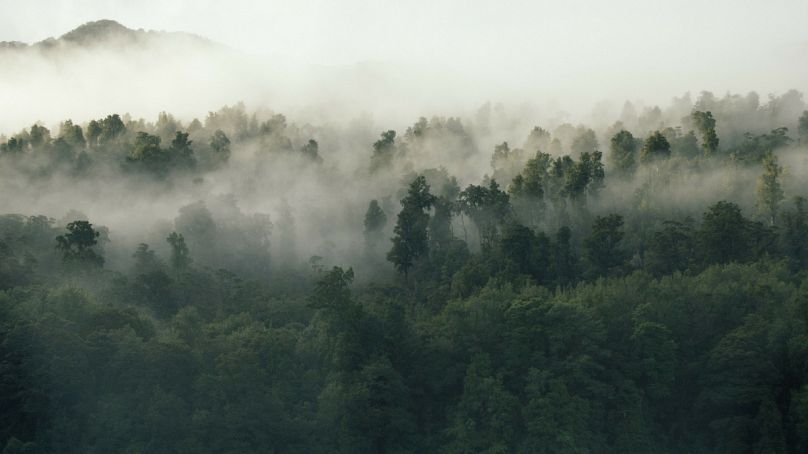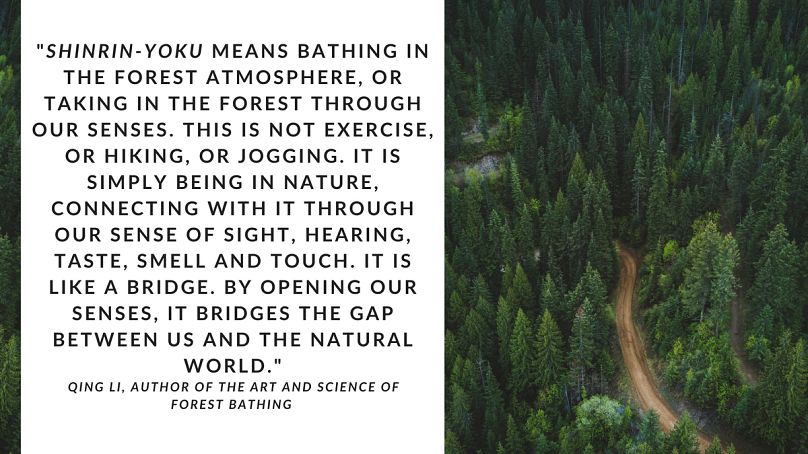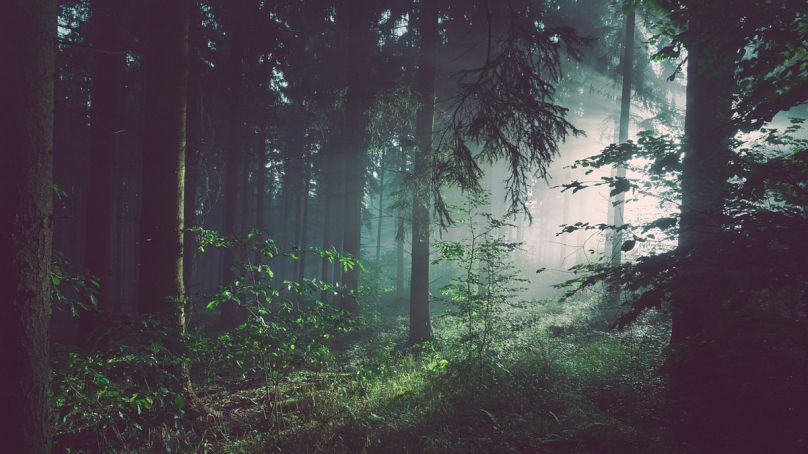People are reconnecting with nature in a very unique way.
 ADVERTISEMENT
ADVERTISEMENT
On a sunny sunday, a group of adults is walking among the lush green trees, at the heart of a natural park near Barcelona. Breathing in the smell of the damp earth and feeling the cool breeze ruffling through the branches, they are following their guide. Looking at them, you could think they are taking part in a hike, but they are actually doing a session of ‘forest bathing’.
Known as Shinrin-yoku in Japan, where it first emerged in the 1980s, this is a therapy that has grown in popularity around the world. In recent years, it has benefited from a massive impulsion in the US, and it’s now increasingly offered in different European countries - as people become more and more seduced by the health promises it seems to offer.
“It is no surprise that shinrin-yoku first developed in Japan. The Japanese are a forest civilization. Their culture, philosophy and religion are carved out of the forests that blanket the country – not to mention all manner of everyday things, from houses and shrines to walking sticks and spoons. Forest bathing as a method of preventing diseases and promoting health is becoming a focus of public attention,” says Qing Li an associate professor at Nippon Medical School, Tokyo and author of the book The Art and Science of Forest Bathing.
In 1982, Japan introduced a national health programme for forest bathing as a preventive health measure, and from 2004 it launched a large-scale initiative inviting researchers to investigate the effects of forest bathing on human wellbeing.
Reconnecting with nature
There is no single unique way of doing forest bathing but it can be seen as a way to reconnect with nature and to try a different therapeutic experience. It can perhaps best be defined as practice of getting immersed in nature by mindfully using all five senses - no matter how this is done.
“Shinrin-yoku means bathing in the forest atmosphere, or taking in the forest through our senses. This is not exercise, or hiking, or jogging. It is simply being in nature, connecting with it through our sense of sight, hearing, taste, smell and touch. Shinrin-yoku is like a bridge. By opening our senses, it bridges the gap between us and the natural world,”Li explains.
Alex Gesse, a certified Forest Therapy Guide, Mentor, and Trainer with the Association of Nature and Forest Therapy Guides and Programs regularly takes groups to the forest. In the two years since he started his organisation Shinrin-Yoku Barcelona, he has guided very different people, including groups from the corporate world on work retreats, but also school children, youth at risk of social exclusion, or people with mental or physical disabilities.
A session last 2 to 3 hours, walking in the forest, with the guide offering a series of ‘guided invitations’ (suggestions) and doing activities to awaken people’s senses to the nature that surrounds them. The walk ends with a ‘tea ceremony’ using some of the plants collected along the way.
Although different individuals may react differently to the forest, all can derive benefits from their time at the heart of the lush vegetation. “Forest bathing is not about ‘hugging trees’. It’s about helping participants to create their own space, their way of relating with the environment, with the rest of the group and with themselves. Various activities and invitations are proposed to allow them to take in the forest environment and to become more open to nature’s rhythms,” Gesse says.
While people can try forest bathing on their own, starting out with someone to learn how to be in the forests as our ancestors used to, can be useful. Indeed, getting as much information as possible about the walk and the methods used by the guide beforehand can make the experience more enjoyable. Different guides may use different approaches as there is no universal or regulated way to run forest bathing sessions.
“Europe is really opening up to forest bathing, and I expect a growing number of people to train as guides in 2019. The UK, Spain, Portugal, Ireland, Slovenia Finland and Germany are among the most dynamic countries, with a lot of forest bathing opportunities, but it’s worth remembering that they vary based on the country’s particular culture or traditions in the forest,” Gesse explains.
Health benefits
The variety of forest bathing experiences, in different types of forests, means that its benefits can be a little hard to generalise and to study directly. However, it is clear from people’s experiences and from the scientific literature that the practice is associated with health improvements.
After a session, you may feel more relaxed and energized. As we have intuitively known for generations, nature has a calming effect and can help reduce anxiety, depression, anger and fatigue. Regular practice of shinrin-yoku is also thought to reduce blood pressure, heart rate, stress hormones. This, researchers say, may have preventive effect on hypertension and cardiovascular diseases.
Some studies have also shown that forest bathing is linked to an increase in the number of natural killer cells - a special type of human cells - and this is thought to have a preventive anti-cancer effect. It’s likely however that people would have to repeat the experience regularly to boost prevention and see long-term changes.
Why these benefits are observed remains unclear. “We are still unsure how being in the forests leads to these health improvements. Research is now really focusing to find out more about this,” says Gesse. Whatever the explanation may be, and even if you don’t expect radical health benefits, forest bathing is a valuable experience to break from the fast-pace modern world, and in peace with yourself.
Writer: Léa Surugue













